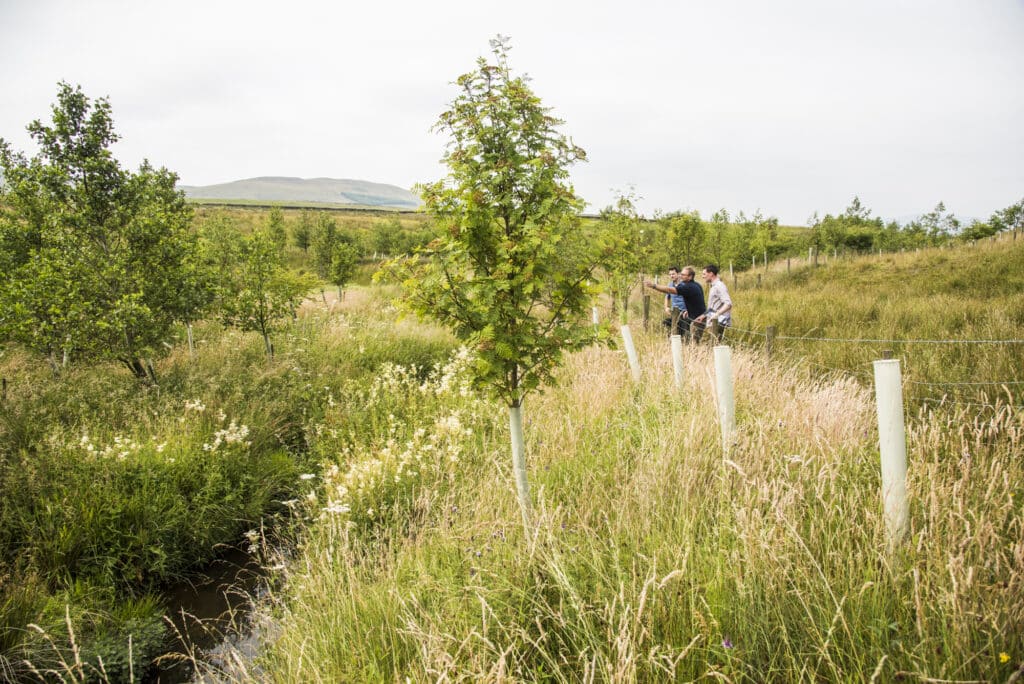
Tributrees
Tributrees is a woodland creation project which forms part of our 10-year Lancashire Woodland Connect Campaign and the Environment Agency’s Environment Programme. The project will build on our previous experience using our innovative tree planting prioritisation tool. This GIS tool uses multiple datasets with information on everything from land elevation to rainfall flow paths to habitat type. Using this tool means we can focus woodland creation efforts on areas that will deliver the most benefit.
Over five years we deliver a 5 year programme of tree planting that focusses on creating riparian ‘buffer strips’. These are relatively narrow strips of woodland next to rivers. Overall, the aim is to enhance 50km of river water bodies and plant around 20Ha of woodland.
Why is tributrees planting trees next to rivers?

The planting of trees along the riverbank is known as riparian planting. There are loads of reasons why it’s important, which is why the Tributrees project focusses on these areas.
Firstly, trees play an essential role in improving water quality in rivers. They absorb pollutants such as nitrogen and phosphorus, which are common elements found in fertilizers and animal waste. These pollutants can cause eutrophication and algal blooms in water bodies. Additionally, trees act as a natural filtration system that remove other pollutants like sediments, heavy metals, and organic chemicals.
Secondly, trees planted along riverbanks provide shade and keep the water cool, which is important for maintaining the health of river ecosystems. The shade helps to keep water temperatures low, which is vital for species such as trout and salmon, which are very sensitive to changes in temperature. Trees also provide a buffer against extreme weather events, such as floods and droughts.
Thirdly, trees play a vital role in improving soil structure. The roots of trees help to stabilize the riverbank, preventing erosion and reducing sedimentation in the water. The leaves and branches that fall from the trees help to build up the soil organic matter, which supports the growth of healthy plant life, including aquatic vegetation.
Finally, trees also play a crucial role in natural flood management. During heavy rainfall, trees absorb a significant amount of water through their roots and prevent it from flowing rapidly into the river, reducing the risk of flooding downstream. The root systems of trees also help to stabilize the soil, making it less prone to erosion during floods. Furthermore, the leaves and branches of trees that fall into the river during floods create leaky dams, which slow down the flow of water, reducing the risk of erosion and protecting riverbanks from damage.

